Buxton Beach frustrations boil over at Dare County Board of Commissioners meeting
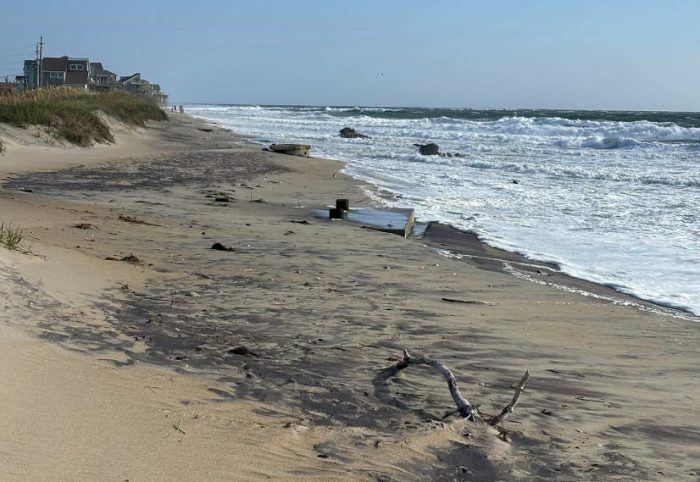
Frustrations about Buxton Beach were evident at the September 3 monthly meeting of the Dare County Board of Commissioners (BOC), which featured an update on Buxton Beach by U.S. Army Corps of Engineers (USACE) Savannah District Commander, Col. Ron Sturgeon.
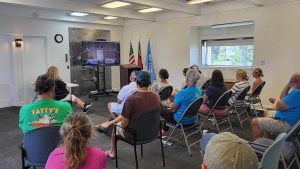
From the roughly 20 Hatteras Islanders who attended the meeting virtually at the Fessenden Center Annex in Buxton, to the seven-member BOC itself, the slow progress to remediate the former military base garnered lots of questions but few answers on what could be done to expedite a permanent solution.
A three-tenths-of-a-mile section of Buxton Beach has been closed since September 1, 2023, after two offshore hurricanes eroded the shoreline and exposed leftover infrastructure from a 1956-2010 military base, as well as sporadic but strong petroleum smells.
“As of this morning, the Buxton Beach site has been completely uncovered after overnight winds of 20-25 miles per hour,” said Buxton Civic Association (BCA) Board Member Wendi Munden at the meeting. “The smell of petroleum I got this morning was sickening. It hit you in the back of the throat and hit you in the back of the nose… We can’t wait any longer.”
Because the Buxton Beach site is part of the Buxton Formerly Used Defense Site (FUDS) program, the USACE is responsible for addressing the petroleum contaminants related to Naval activity from 1956-1982. (The U.S. Coast Guard is responsible for other potential contaminants from their use of the site from 1985-2010.)
During his presentation to the BOC, Col. Sturgeon outlined what had been done by the USACE at the roughly 50-acre Buxton property in the past year.
Namely, this included the removal of a 70 to 80-foot-long pipe that was thought to be a source of petroleum in May, and geophysical work that was conducted on June 24-28 to identify any potential fuel distribution components, such as pipes or fuel tanks, that still remained under the surface.
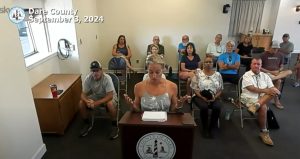
Testing was conducted after the May pipe removal, and while results from the May testing as well as the results from June’s geophysical examinations are not yet available, Col. Sturgeon noted that early indications show that petroleum in the area remains, although no underground storage tanks have been found.
“All of this really confirms that comprehensive sampling of the project area is the next correct step, so we’re not done yet,” said Col. Sturgeon, referring to a comprehensive testing event that is expected to begin at the site in October.
Sturgeon also noted that the USACE was moving forward with the formation of a Restoration Advisory Board, with the first public meeting to be held in late October or early November.
According to a USACE 1998 Procedures Manual, as well as a 2007 Handbook from the U.S. Secretary of Defense, the purpose of a Restoration Advisory Board (RAB) is to create a line of communication between local communities and the agencies responsible for cleaning up sites that were previously used by the Department of Defense.
“The RAB Board members will represent the public and are provided access to the environmental restoration process, giving the members the opportunity to review progress, participate in dialog, and provide comments and advice to the [USACE] District’s decision-makers concerning the overall cleanup,” said Col. Sturgeon.
The BOC was appreciative of Col. Sturgeon’s updates and attendance at the meeting, but all seven members had questions and comments about how slowly the process to fix Buxton Beach was moving.
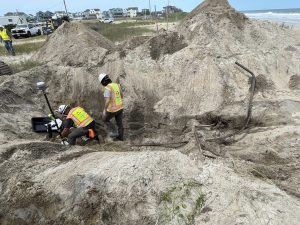
Commissioner Rob Ross pointed out that it was taking months to receive test results from the May pipe removal, and that it would take many more months to receive results from the upcoming comprehensive site testing, with data likely not being available until 2025.
He also touched on the fact that the USACE did not have the authority under the FUDS program to remove the abandoned military infrastructure itself – only the contaminants – and that the May pipe removal was conducted under a $525,000 contract, which seemed like a hefty price for the two-day removal operation.
“It was reported, with some level of astonishment back in May, that the Army Corps spent half a million dollars to have a contractor remove a 70-foot piece of pipe. Everyone in the real world said, ‘That’s absurd – No one would pay a half million dollars,’ and it has been repeated and repeated. I’m hoping that this was simply a misstatement,” said Commissioner Ross. “Could you confirm or deny that it was a half million dollars to remove a piece of pipe?”
“It was,” answered Col. Sturgeon, noting that the contract included more than the excavation work alone. “There’s a lot of things that go into that $500,000. The workup to get the contracts ready to go, to put the contracts on the street to remove those pipes, and to do the overall report for that contract – it’s all within that $500,000… There’s a lot more that goes into that.”
The lack of ownership over removing the debris itself was another point of frustration. An Environmental Assessment and Finding of No Significant Impact for Defense Environmental Restoration Program from July 1985 outlined the demo work that was required after the Navy no longer needed the National Seashore property, stating that “The project involves demolition of 2 concrete buildings, foundations and attendant fences, and pavements.”
According to a 1986 Army Corps of Engineers statement of work for demo and removal of buildings, utilities, etc., the required work was completed. However, as evident during storms and erosion events, the foundations and components of several oceanfront structures – including and especially the Navy’s Terminal Building – were not fully removed.
“We’ve talked a great deal about the source, and the potential toxicity of petroleum distillates that are remaining or not remaining… but we continue to skirt around the big chunks of concrete debris,” said Commissioner Ross. “The last explanation was that FUDS’ jurisdiction does not include the removal of debris. And between the Navy, the Department of Defense, the National Park Service, the USACE, the Coast Guard, and the damn New Jersey Turnpike System, no one has stepped up to remove the concrete [structures].
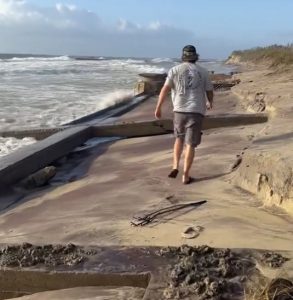
“I’m just wondering if it will remain this ping-pong ball – that no one is going to touch the concrete [and debris] until a whole gang of citizens and the county with large equipment just marches down there and starts removing it ourselves.”
Col. Sturgeon confirmed that “There is no change when it comes to debris removal with the FUDS authority.”
The slow release of past test results, combined with other questions posed by Commissioner Ross and the other commissioners, caused the BOC to echo the longstanding frustration of Buxton community members.
“This is unacceptable. It is totally unacceptable,” said Chairman Bob Woodard. “This country has got to do something to eliminate all of this red tape.”
Col. Sturgeon emphasized that the Buxton FUDS site was a priority to the USACE’s Savannah District, and stated that he would be visiting the site again on Tuesday afternoon to see the resurfaced infrastructure and petroleum smells firsthand.
“There are 46 FUD sites that we currently manage, in over six states, and Buxton is the one that has received my full and undivided attention,” said Col. Sturgeon. “This is a priority for me, and it’s a priority for my team as well.”
The commissioners, however, emphasized that they were desperately looking for solutions outside the confines of the FUDS restrictions and the USACE’s efforts.
Commissioner Ross recounted a recent conversation with State Senator Ted Budd, who asked Ross what he could do for the Outer Banks area.
“I said, ‘Senator, I have one thing – Please, who has enough juice to clean up the mess in Buxton? Don’t build us new buildings, don’t give us massive grants worth millions of dollars. Please clean up the mess that the Navy left there, that these citizens are living with, day in and day out.’”
“Who can do this? Is it a bill in Congress? Is it a phone call to the Secretary of Defense? I don’t know, but I literally was begging him for anything he could do, or his office, which can break through the frustration of the endless reviews, and months of study. All this does is just leave us feeling very, very frustrated and disappointed.”
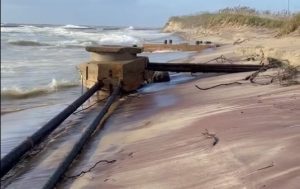
The USACE’s update at the September 3 meeting seemed to reiterate the upcoming actions that were outlined in a summertime press release, with no new developments or insights into actionable next steps. Regardless, the roughly 20 virtual meeting attendees in Buxton were grateful for the USACE presence, and were especially grateful for the BOC’s response.
“I’ve never heard our county commissioners go to bat for us like that before. Ever. And that was a huge win for us,” said BCA board member Jeff Dawson after the meeting.
“They told us the best thing that we can do is get public support, and we just did,” he added, referring to the unusually large crowd at the Fessenden Center for the BOC meeting. “I know it doesn’t seem like much, but public meetings get no attention. Bob Woodard, the Chairman, said ‘We haven’t had that many people in Buxton in years.’”
“The turnout today was great. Let’s double it next time, or even triple it,” said Wendi Munden after the meeting. “The Board of Commissioners is very frustrated because they are not being heard. It’s one thing for us Buxton residents to be ignored, but for them to not be heard, and for them to not get the answers… there’s something wrong here.”
For more information on Buxton Beach
- The Buxton Civic Association meets monthly at the old Buxton Volunteer Fire Department building beside Burrus Field. The next meeting is Wednesday, September 4, at 7:00 p.m.
- Developing info from the Buxton Civic Association (BCA) can be accessed via the organization’s website at Buxtoncivic.com or through the BCA’s official Facebook page.
- Remember that while the environmental issues at Buxton Beach are considered to be a public safety and environmental hazard, just three-tenths of a mile of the shoreline is closed, out of 75 miles of National Seashore. In short, the public can still visit and enjoy Buxton, and Hatteras Island in general. The primary concern is that this issue needs to be addressed now, before it potentially becomes a larger problem.
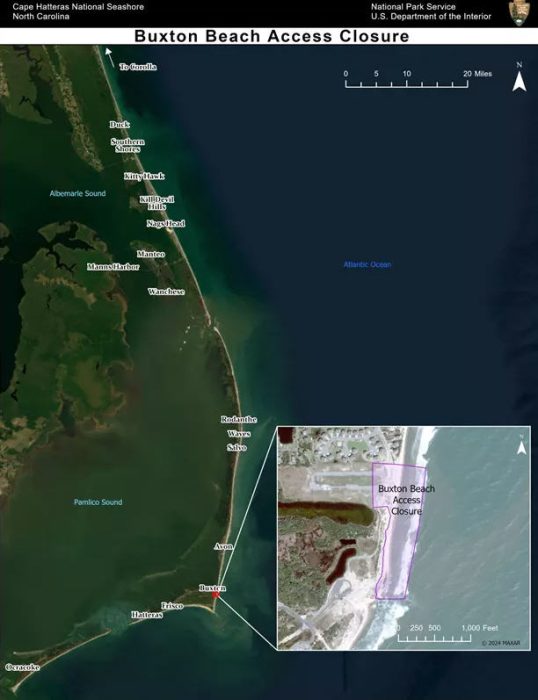




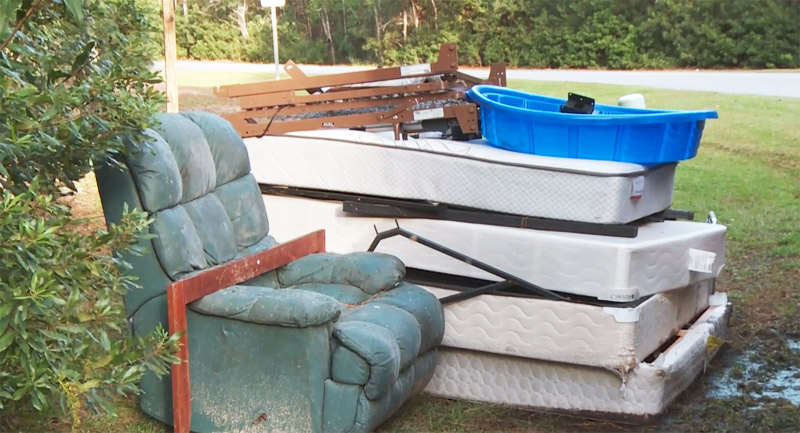
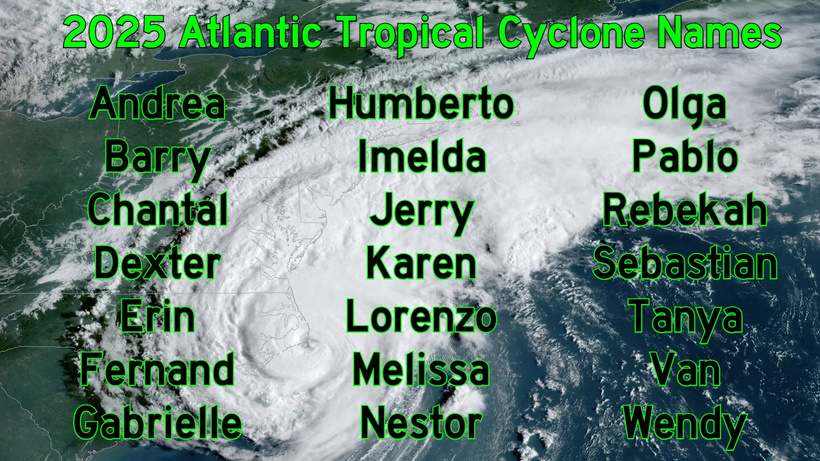
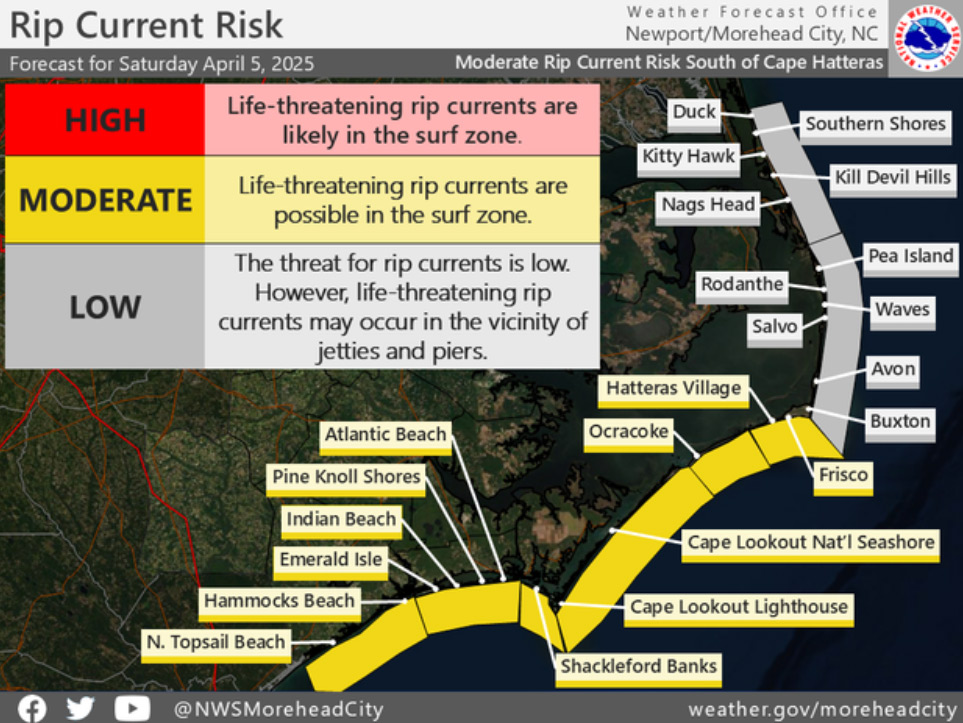
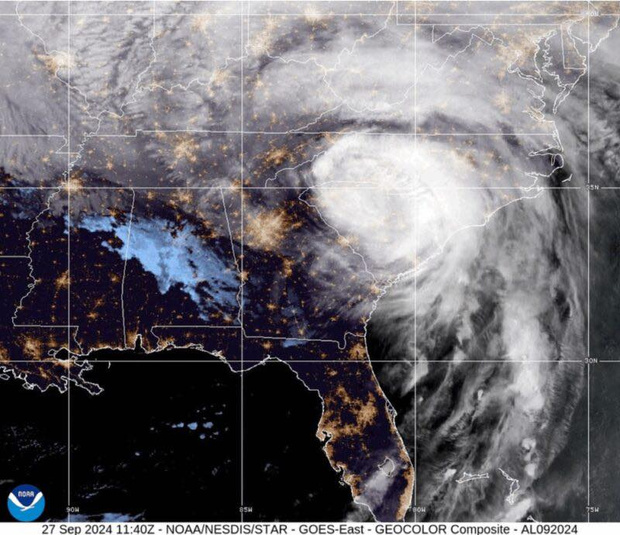

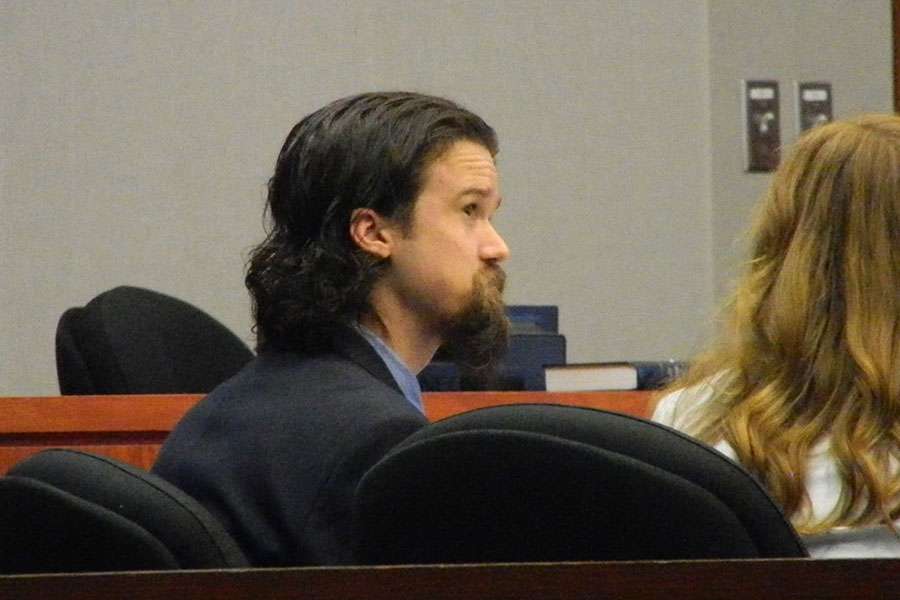
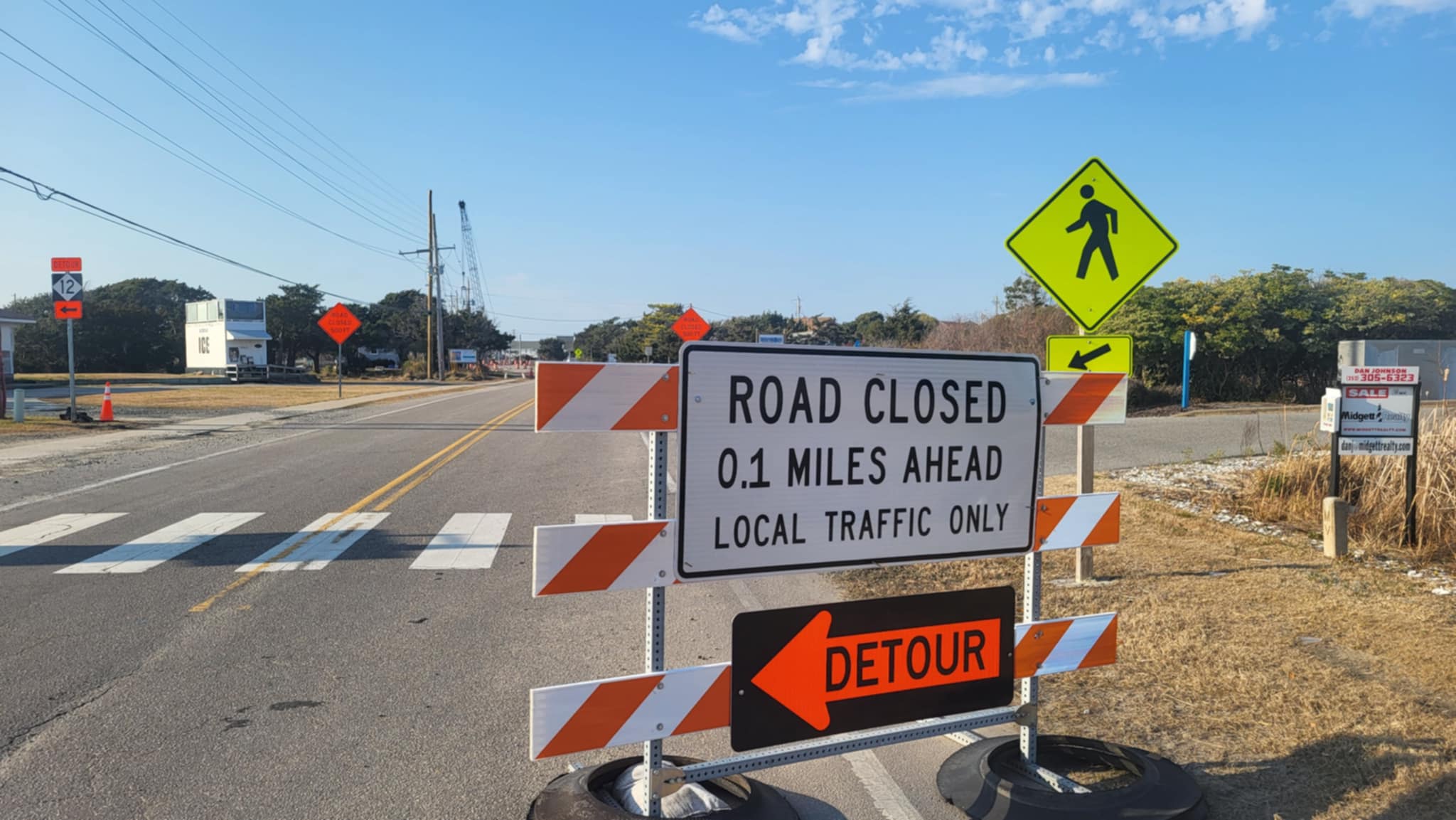
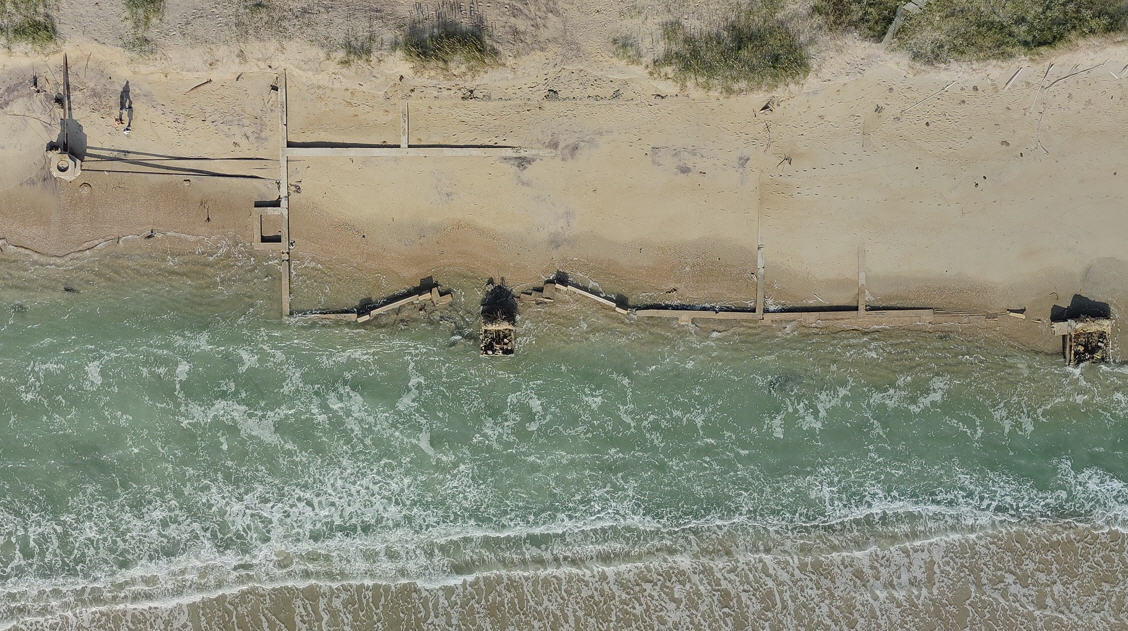


I am familiar with government contracting and this is exactly how they roll. Overpay at every opportunity by making sure companies with established relationships are granted gifts like this. A local or two with a back hoe could have taken care of this for a lot less. I have seen some absurd pricing, but this one is the most by far.